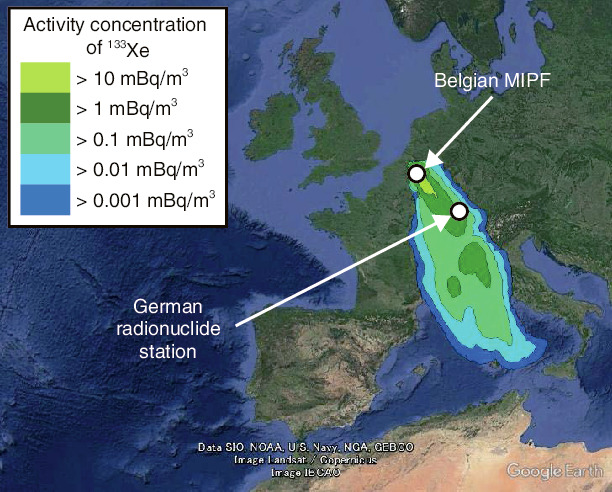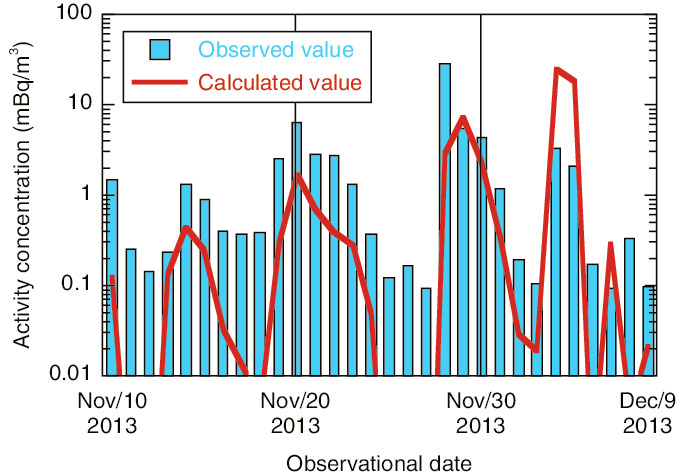
Fig.10-2 Atmospheric dispersion simulation of Xenon-133 (133Xe) emitted from a Belgian medical radioisotope production facility (MIPF)

Fig.10-3 Comparison of 133Xe activity concentrations observed at the German radionuclide station and calculated in simulations by the JAEA
Although the Comprehensive Nuclear-Test-Ban Treaty (CTBT) that bans nuclear tests in any space has not yet entered into force, approximately 85% of the international monitoring system of nuclear testing, comprising 337 monitoring facilities worldwide, has established and operated provisional measures.
Among the relevant radionuclides to be monitored by the CTBT is radioxenon, which is generated in large amounts by a nuclear test. Because noble gases are chemically inert, radioxenon is more likely than other radionuclides to seep to the surface after an underground nuclear test. Therefore, radioxenon is an important detection-indicator of an underground nuclear test. Radioxenon is observed at 30 radionuclide stations worldwide (as of May 2017), including the Takasaki station in Japan, under the international monitoring system. Previous observation results showed that the radioxenon isotope 133Xe is frequently detected with high activity concentrations at some stations. MIPFs are considered as the dominant emission sources of 133Xe, as they produce radioisotopes for nuclear medical examinations by nuclear fission reactions. To discriminate whether the observed 133Xe originates from civil nuclear facilities or nuclear testing, one must evaluate the impact of the 133Xe emitted from MIPFs on the observational results at radionuclide stations.
The impact of MIPFs was investigated in an ATM simulation analysis. Implemented in 2015, this project involved seven nations, including us and the CTBT Organization (CTBTO). In the ATM simulations, we analyzed and evaluated the activity concentration of 133Xe arriving at the German radionuclide station using the stack monitoring data (acquired from November 10th to December 9th, 2013) of the MIPF of the IRE in Belgium. Figs.10-2 and 10-3 show an ATM simulation result and a comparison between the observed and simulated results at the station, respectively. The observed and calculated values on days of high 133Xe activity concentration were well correlated, confirming that the MIPF of the IRE was a dominant emission source of 133Xe. Conversely, on some days (when the observed 133Xe activity concentration was low), the MIPF of the IRE was an unlikely emission source of 133Xe.
We are continuing our 133Xe observations in cooperation with the CTBTO and with specialized institutions in other countries. By evaluating the impact of emissions from civil nuclear facilities on the observational results, we hope to enhance the capability of monitoring nuclear-test emissions.
<Previous: 10 Development of Science & Technology for Nuclear Nonproliferation | Next: Promotion of Collaboration>